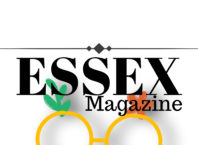New research from Findmypast has revealed that over a third of Brits (39%) think they can figure out someone’s personality from their handwriting.
The research found that handwritten letters and cards are still the nation’s preference, with over half of Brits (54%) believing that people care more about them if they’ve been given something handwritten. Despite this, over half (57%) of Brits believe the art of handwriting is being lost.
The value the nation puts on handwriting is clear with nearly a third (31%) of Brits saying that they feel closer to their ancestors when they see their handwriting, and 23% saying they judge someone based on their handwriting – despite Brits only putting pen to paper an average of four times a week.
The research also revealed that Gen Z is the age group that struggles most to read their own handwriting (28%), despite being the group most likely to judge others based on their handwriting.
Family history website, Findmypast, has partnered with leading graphologist Tracey Trussell to reveal the surprising truth abouts our Prime Ministers, Royals and notorious criminals through new handwriting analysis of historical records, including the newly released 1921 Census.
Historical analysis
Trussell claims that Boris Johnson’s handwriting proves that he is “bullishly optimistic” and a “complex, unconventional” man that “does things to suit himself”. Only in 2020 amidst the pandemic did Johnson’s left margin dramatically narrow, showing that “the doubts were creeping in.”
Trussell compared Johnson to Churchill, whose handwriting slopes told of “limitless courage and passion”, and his aerated composition and downward slashing t-bars showed he was an “expert at taking a broad, detached view on things” and was able to “influence and inspire” all.
When it comes to the Royal family, Tracey analysed documents spanning Queen Elizabeth’s reign, with her handwriting revealing how she was a “benevolent” leader, through her large, stretched out script. The analysis also indicated a “finely tuned emotional barometer” through tipping and slanting letters.
Looking at the 1921 Census returns of the nation’s most infamous criminals, Herbert Rowse Armstrong, an English solicitor and convicted murderer and Thomas Mucklow, one of the real Peaky Blinders, Trussell uncovers impatience and trauma, through a mixture of long downstrokes, heavy pressure and angled appendages.
Mary McKee, Head of Content Publishing at Findmypast, has said “When the 1921 Census was unveiled to the public for the first time in January 2022 it revealed a wealth of historical information and for many, it was the first time they had ever seen their ancestor’s handwriting. That marked a historic moment as we’ve found that nearly a third of Brits say that they feel closer to their ancestors when they see their handwriting.
“Now, through this research we have an opportunity to dig even deeper and understand the psyche of these notable historical figures – giving a brand-new perspective on history.”
Tracey Trussell, graphologist, has said “Handwriting is an amazing device for understanding someone’s personality, as the writer is unconsciously expressing their unique psychological profile on paper, revealing their core character and showing that state of mind they were in when they wrote a certain letter. It’s been amazing to dig into Findmypast’s vast historical archives to further understand the personalities of these key figures from history.”




